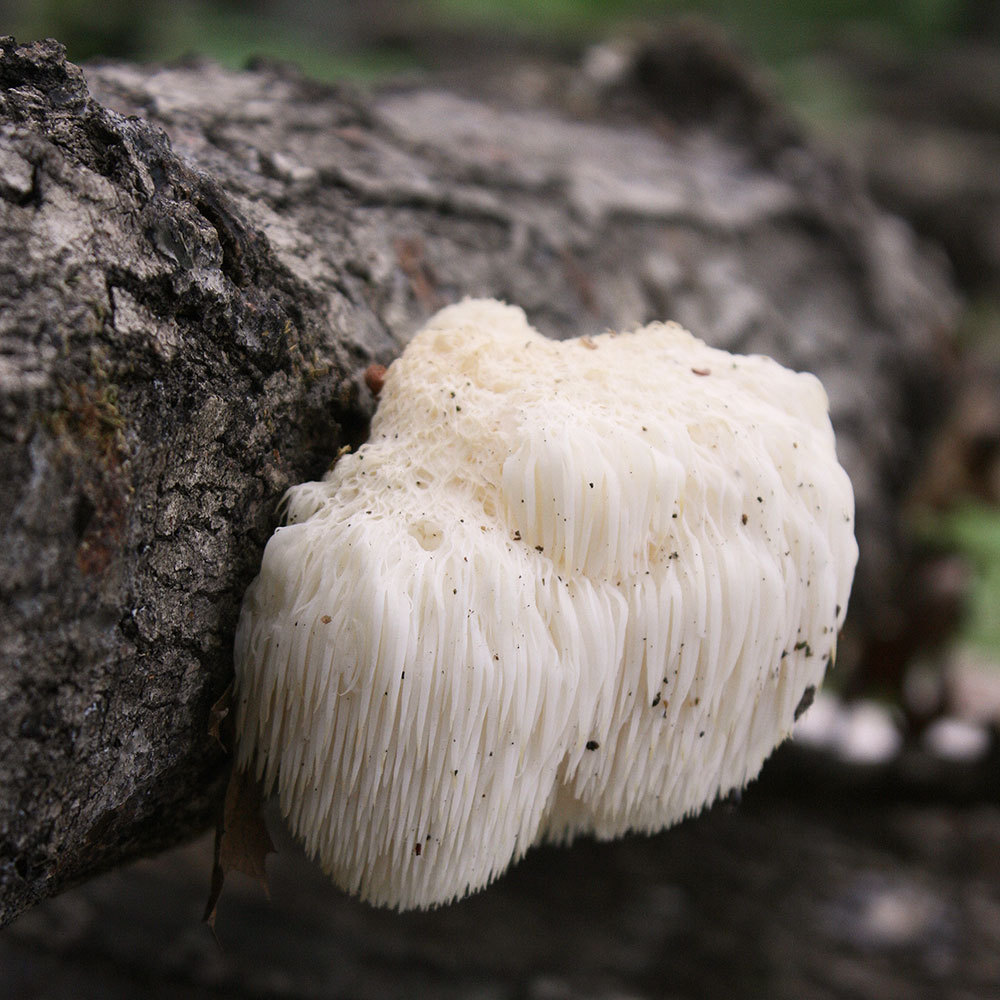Growing Lion’s Mane Mushrooms on a Tree Trunk: A Detailed Guide
1. Introduction
Growing Lion’s Mane mushrooms in your garden offers a unique and rewarding experience, allowing you to cultivate a gourmet and medicinal fungus known for its numerous health benefits. Lion’s Mane is celebrated for its potential to support cognitive function, boost the immune system, and promote nerve health. By growing this remarkable mushroom at home, you can enjoy fresh, organic Lion’s Mane while also gaining the satisfaction of producing your own food.
The process is simple and can be done using a hardwood log and mushroom spawn, making it an accessible project for both novice and experienced gardeners. Once established, your Lion’s Mane log can produce mushrooms for several years, providing a continuous supply of this brain-boosting superfood. Whether you’re interested in its culinary uses or its health benefits, growing Lion’s Mane is a fantastic way to enhance your garden and your well-being.
2. Selecting the Tree Trunk
-Type of Wood. Use hardwoods such as oak, maple, beech, or birch. These trees provide the best environment for Lion’s Mane to thrive.
-Size: A log with a diameter of 6-12 inches and a length of 3-4 feet is ideal.
Freshness. The log should be freshly cut or no older than six months, ensuring that it still has enough moisture and nutrients.
3. Obtaining Lion’s Mane Spores or Spawn.
-Where to Buy: Purchase Lion’s Mane mushroom spawn (which contains spores) from a reputable supplier. Online stores, specialty gardening centers, or mushroom farms are good sources.
-Types of Spawn: Plug spawn or sawdust spawn are ideal for log inoculation.
Storage: Keep the spawn in a cool, dark place until ready to use, preferably in a refrigerator to maintain viability.
4. Preparing the Tree Trunk
-Drilling Holes: Drill holes into the log at 6-inch intervals, creating a grid pattern around the entire log. The holes should be about 1 inch deep and slightly larger than the diameter of the spawn plugs.
-Inoculating the Log: Insert the spawn plugs or sawdust spawn into the holes. If using sawdust spawn, pack it tightly into the holes using a dowel or similar tool.
-Sealing the Holes: Cover the inoculated holes with melted wax (beeswax or cheese wax) to protect the spawn from drying out and prevent contamination.
5. Placement and Care
-Location: Place the inoculated log in a shady, moist area of your garden, away from direct sunlight. Logs can be positioned horizontally or leaned against another structure.
-Moisture: Maintain moisture by regularly watering the log, especially during dry periods. You can also wrap the log in a breathable fabric like burlap to help retain moisture.
-Temperature: Lion’s Mane mushrooms prefer cooler temperatures, ideally between 55-65°F (13-18°C), though they can tolerate a broader range.
6. Growth Timeline
-Colonization Period: It can take 6-18 months for the mycelium (the fungal network) to fully colonize the log.
-Fruiting: Once colonized, mushrooms will begin to fruit, typically in the fall or spring when conditions are ideal (cool and moist). Look for white, shaggy growths emerging from the log.
7. **Harvesting
-When to Harvest: Harvest when the mushroom is fully developed but before it starts to discolor or dry out. The teeth of the mushroom should be long and well-formed.
-Harvesting Method: Use a sharp knife to cut the mushroom close to the log, being careful not to damage the bark or mycelium.
8. Care After Harvest
-Continued Growth: After harvesting, the log may produce more mushrooms in subsequent seasons. Continue to maintain moisture and shade.
-Log Lifespan: The log can continue producing mushrooms for up to 5 years, depending on its size and the growing conditions.
9. Potential Issues and Solutions
-Pests: Watch for insects or other pests that might infest the log. Use organic pest control methods if necessary.
-Contamination: Prevent contamination by ensuring the log is healthy, the spawn is fresh, and the holes are well-sealed with wax.
10. **Conclusion
– Growing Lion’s Mane mushrooms on a tree trunk is a rewarding process that requires patience and care. With the right conditions, you can enjoy fresh, homegrown mushrooms for several years.
